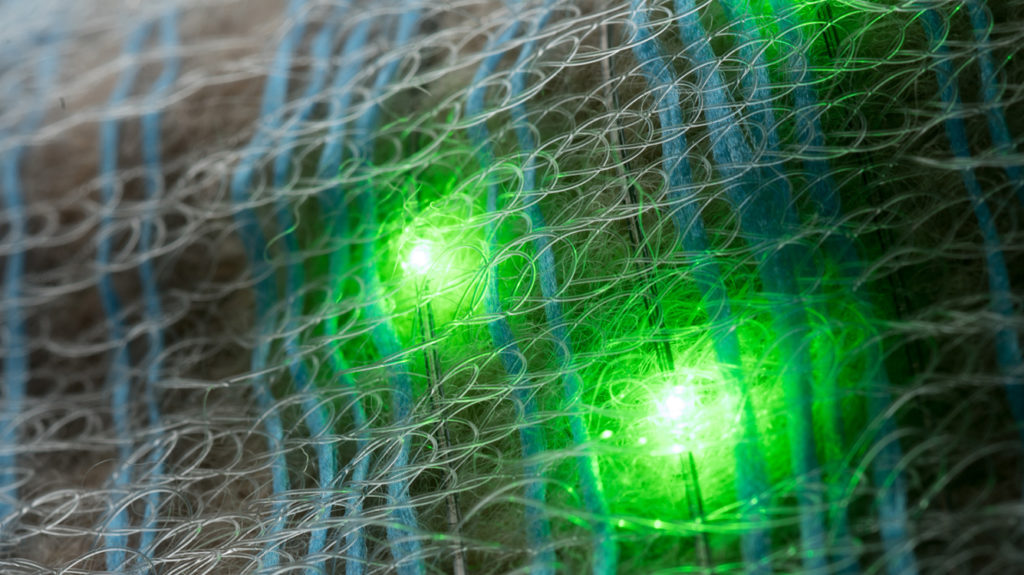Wires woven into the fabric make smart clothes comfortable and functional

Scientists have proposed to sew “smart” clothes from fabric with already built-in wires, insulators and diodes. Thanks to this, such clothes will become multifunctional and much more comfortable. The results are reported on the Nature pages.
Researchers have long pondered the idea of “smart” clothing, into which special electronics are embedded, allowing them to greatly expand its capabilities. For example, some suggested making vibrating yoga pants that would indicate the correct movement to their wearer; touch sensors built into the jacket in order to control the phone without taking it out of the pocket; clothing for cyclists with automatic illumination that would warn car drivers about the athlete’s intention to turn, and many others. Nevertheless, such clothes have not yet become a mass product – largely due to the high cost, but also due to the peculiarities of their production. For example, some items require a very careful attitude that does not allow washing.
As part of the new approach, scientists were able to literally weave the necessary elements – conductors, insulation and diodes – into the very structure of the fabric. The authors were inspired by the technology of optical fiber production, during which an initially thick workpiece is heated and stretched until it turns into a thin cable. The fabric made using the new method surpassed the previous ones both in electrical characteristics and in durability: the scientists carried out ten machine wash cycles, and nothing happened to the fabric.
Scientists have made several different things from the fabric – for example, socks with an LED and a photo detector, which are able to track the heartbeat by changing the flow of light, since the reflectivity of the skin changes due to active blood flow. In addition, the authors of the study demonstrated how different tissues “communicate” with each other – an LED on one could transmit information to a photodetector at a distance of a met
er. Source: indicator.ru